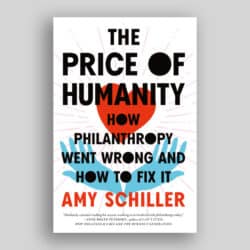1984, By Richard A. Hopkinson, Published by the Institute of Donations and Public Affairs Research, Montreal, 1985, pp.70
Moral Obligation or Marketing Tool? Examining the Roles of Corporate Philanthropy, By Alice Muckier, Published by The Council on Foundations, Washington, 1985, pp.30.
REVIEWED BY EDWARD J. WAITZER
Member, The Ontario Bar
Under pressure from many sides, corporate managers have gradually accepted the proposition that private enterprise should concern itself with public problems, particularly as those problems have become more threatening to the legitimacy of our economic system. Certainly, the modern business organization has shown itself to be one of the most efficient economic instruments in history. For those who believe that our present market and political systems are basically sound, an acceptance of corporate social responsibility and public involvement acknowledges the unique role that the private sector can play in strengthening the society in which it operates-both in the application of private resources to public problems and, more generally, in contributing to a dynamic balance between the public and private sectors.
For years, the Institute of Donations and Public Affairs Research (IDPAR), along with a few other organizations (such as The Canadian Centre for Philanthropy and the Canadian Council for Business and the Arts) and individuals (most notably Professor Samuel Martin of the University of Western Ontario) have been lonely voices in a rather muted Canadian discussion of corporate philanthropy. Due, in part, to their patient and persistent efforts, the tide gradually appears to be turning. For example, the Continental Bank of Canada devoted its most recent annual report to an illuminating presentation of its perspective on corporate social responsibility.
Corporate Giving in Canada, 1984 is the fourteenth consecutive annual survey of corporate giving published by IDPAR. For the growing community interested in this area, each year’s study adds to the cumulative value of IDPAR’s research by providing a consistent monitoring of quantitative trends and qualitative views. The study (and the summary thereof, which is available to non-members of IDPAR) digests, in a clear and concise manner, results of a survey questionnaire and of tax-return data.
Unfortunately, the quantitative data are far from encouraging. For one thing, only 349 replies were received from the nearly 2,550 corporations polled. Data from the valid questionnaires show that corporate giving averaged .37 per cent of pre-tax profits and.72 per cent of after-tax profits. Both figures were down marginally from 1983. Of the $78.5 million in corporate donations to registered charities reported by those who responded to IDPAR’s survey, the 10 leading corporate donors gave $33.7 million (or 40 per cent of the total donations). Such statistics can be misleading. For example, they do not reflect a wide range of non-monetary contributions. On the other hand, when comparisons are made to the United States, it is evident that Canadian business’s record of monetary donations continues to be dismal.
The more interesting (and more extensive) portion of IDPAR’s study is the effort to monitor corporate attitudes to giving. In each year’s survey, subjects of current concern to the corporate community are explored. For 1984 the focus was on gifts-in-kind, matching gifts, foreign aid agencies, the publicizing of donation policies and guidelines, recognition for giving, and sponsorships. The range of responses provides useful insights for those struggling to understand corporate philanthropy in Canada.
The most disquieting response was the minority (23 per cent, up only two per cent from 1976) of corporations willing to disclose their donation policies and guidelines. Those not favouring making their donation policies publicly available cited confidentiality, the need for flexibility, management prerogative, the risk of misinterpretation and pressure, and the possibility of publicity stimulating more requests, as reasons for their desired anonymity. It would be interesting to compare these responses with the views of their corporate managers of the purpose of corporate giving. To the extent that corporate donation programs are surrounded by secrecy, often even within the corporation itself, constituents cannot understand what the corporation is doing or seeking to achieve in the social arena. This lack of information reinforces the attitude that corporate giving does not require the same level of competence and attention as other aspects of business. The lack of information also makes it difficult for those seeking support to bring to a corporation’s attention, proposals for projects that might be especially appropriate to that particular company.
While the reviewer fundamentally disagrees with the majority of the study’s respondents on the question of public disclosure (see The Bottom Line for Corporate Philanthropy, a study published by The Canadian Centre for Philanthropy in August 1982), the most troublesome element of the survey results is the implication that there has been little progress made in Canada during the course of the last decade in clarifying and making more purposeful the roles of corporate philanthropy. It is to this issue that The Council on Foundation’s publication Moral Obligation or Marketing Tool? Examining the Roles of Corporate Philanthropy, is addressed. The publication summarizes a day-long workshop sponsored by the Council in April 1985 and attended by senior representatives of corporate giving programs and the foundations. Whilethe publication highlights many of the outstanding issues, it does little to advance their analysis, much less to resolve them.
Neither publication addresses the fundamental issues surrounding corporate social responsibility. Curiously, increasing public concern about the levels of corporate concentration in Canada may cast a new pall over the issue. Pure corporate voluntarism suggests that corporate management use the enormous resources available to it to influence the social and political course of events. This type of increase in corporate power is probably the last thing that those who call for greater “corporate responsibility” desire.
As in other decisions concerning the use of corporate resources, one policy alternative is to provide shareholders (or other constituent groups) with a voice in corporate social decisions. A number of United States corporations now encourage this process by gearing their corporate donations programs to the preferences of shareholders, as communicated through the annual proxy solicitation process.
More fundamentally, corporate social responsibility should start with voluntary and constructive participation by the business sector in designing regulatory frameworks which are responsive to public needs while interfering as little as possible with the efficient working of the economy. With a few individual and collective exceptions (e.g., the Business Council on National Issues), this type of voluntarism-which recognizes that government retains the final authority on matters of social policy-has often been shunned (if not sabotaged) by business leaders.
Increased disclosure would be a good starting point. Suppose, for example, a government body were to release each year a list of major social issues in which corporate activity could have a significant public dimension. Companies in the private sector could then be invited to state in annual corporate reports the extent to which their decision-making had taken account of potential social consequences in the identified areas. Government could analyze these disclosures, but their primary usefulness would be in the public arena, to raise the level of awareness about major social issues and corporate responses. To the extent that corporations indicated active concern for the social impact of their own operations, the basis for the public provision of similar goods and services would be significantly eroded. Such a system, although startling at first thought, might be less intrusive than many interventions that the private sector has learned to accept in the absence of its own initiatives—and far less intrusive than those likely to be forced upon business in the absence of strong private-sector leadership.
IDPAR’s annual study has pioneered the effort to develop a body ofinformation about corporate philanthropy in Canada. The Council on Foundations publication identifies some of the fundamental policy concerns. Using these tools it is to be hoped that others will begin to probe deeper into this complex but fertile area.
To Order:
The full report, Corporate Giving in Canada is available only to members of IDPAR. An excellent Summary may be purchased by non-profit organizations for $15 (others, $25) from any IDPAR office:
Montreal: 666 Sherbrooke Street, West Suite 1001
Montreal, Quebec H3A 1E7
(514) 849-1385
Toronto: 500 University Avenue Suite 600
Toronto, Ontario M5J 2H7
(416) 363-4238
Calgary: Suite 563, Esso Plaza West 237 4th Avenue Southwest Calgary, Alberta T2POH6
Moral Obligation or Marketing Tool is available (prepaid) for $5 U.S. to members and $10 U.S. to non-members of The Council on Foundations at:
P.O. Box 002
Washington, DC U.S.A. 20036


